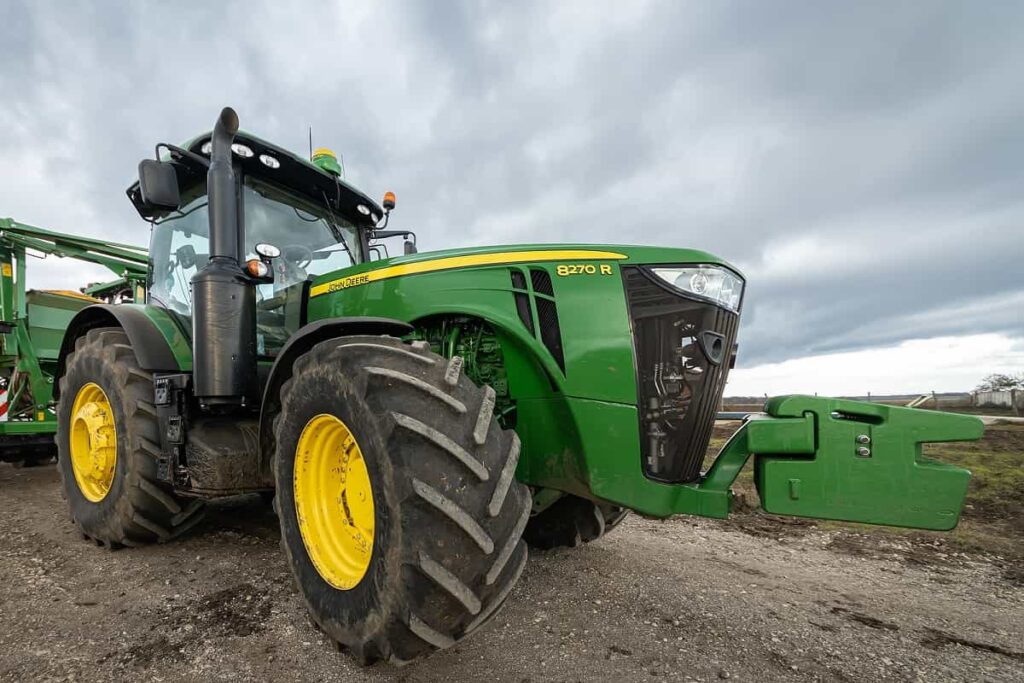Techion’s Microscope in The Cloud for Parasites
Table of contents

Parasites are unique in that they infect a living organism in order to get a free ride through life at the expense of the host. Like today’s modern-day millennial, parasites are careful not to disrupt the equilibrium too much so that they’re not kicked out and forced to fend for themselves. Since parasites consume nutrients from the host, they’re a problem for farmers who are raising animals for consumption.
All animals host parasites at some stage, in much the same way all software contains defects. Consequently, the goal is to minimize the parasites so that they don’t compromise animal performance and welfare. Treating livestock for parasites has historically involved a regular suppression treatment approach, but that’s led to problems with anthelmintic resistance (similar to antibiotic resistance). What’s lacking is a method for detecting parasites without having to ship off stool samples to people in lab coats. We’ve talked before about “labs in the cloud,” and one New Zealand company has found a way to create microscopes, technicians, and expertise in the cloud.
A Microscope in the Cloud


As well as analyzing the images, the Techion system also records the results so they have a data warehouse showing trends in parasite development and resistance.
Given New Zealand’s strong history of agtech innovation, it’s no surprise to see that Techion’s first commercial application is in livestock. It also happens to be an area of expertise for the founder, Greg Mirams, whose experience as a sheep and cattle farmer helped him create the technology platform out of an industry necessity. We sat down to talk with Mr. Mirams about how Techion is helping livestock farmers around the world save money and combat anthelmintic resistant parasites.
Drenching Your Herd
Farming of all sorts is far more difficult than most people think. Animals, like people, have all sorts of medical issues you need to watch out for. It’s a bit gross to think about, but all animals have worms at some stage, in much the same way all software has defects. They just need to be managed so sustainable production can be achieved. After nutrition, parasites affect an animal the most when it comes to the amount of meat they yield for consumption. That’s why livestock farmers use a process called “drenching” to administer anthelmintic drugs to animals that help kill parasites. Animals that suffer from parasites can have growth rates reduced by 30-50%, or in severe cases, animals can die. In a business with increasingly tight margins, that’s a meaningful loss of value. Then there’s all that extra feed the farmer needs to purchase for a bunch of free-loading parasites.
The Old Way
The drenching process has largely been a “guess or regularly treat” approach where animals get treated with limited knowledge if they actually needed it or did the drug work effectively. Some farmers have attempted to move to an evidence-based approach by sending a stool sample to a lab which is then tested for the level of parasites. Based on those results, the farmer may then continue to administer treatment or wait and re-test until treatment is required. It’s about as cumbersome as it sounds, given the logistics of posting stool samples to a lab and the time required for testing before the results are available. Techion recently concluded a four-year study with U.K. supermarket giant Sainsbury’s which showed some alarming numbers about how anthelmintic drugs are failing among their livestock farmer suppliers. Around 37% of farmers in New Zealand and 84% in the U.K. were found to be regularly using an ineffective drench. That extrapolates to a $19 million yearly cost to the Sainsbury’s lamb supply chain.
The New Way
The ability for a farmer to test their own samples means the decision to drench is based on fact, not assumption. Now, there is a device that lets them do this on farm, or by dropping samples to their local vet or retail store. The hardware is purchased up front and then a yearly subscription allows the farmer to receive up to 100 tests per year. The process involves obtaining a stool sample, weighing it, sedimenting and filtering it, then filling some wells in a cartridge, and then placing the cartridge into a cloud-connected imaging device.

The secret sauce is the device’s ability to accumulate the parasite eggs to the top of a liquid meniscus so that pictures can be taken of them and sent through the cloud to a laboratory analyst who can interpret them for the farmer. Nobody in the world is doing parasite testing this way, but the innovation has only just started.
The Newer Way
Right about now you might be thinking that some machine learning algorithms could help automate the interpretation of this imagery since they’re already outperforming humans in imagery use cases ranging from x-rays to mammograms. For the past four to five years, humans at Techion have been analyzing the imagery as it’s uploaded to the cloud. That presently means a turnaround time of one hour for farmers across the globe, 24/7, as Techion has operations in both the northern and southern hemispheres.
In the next few weeks, they’re deploying an upgrade where AI algorithms will achieve an accuracy greater than 90% with humans in the loop to handle the boundary cases. The turnaround time will then move to minutes, and that automation will help them provide their customers with a real-time, point of care solution. Techion’s FECPAKG2 platform has allowed the company to build the only global parasite disease database allowing the development of surveillance, disease trend and drug resistance profiles that it uses to provide local and regional alerts to customers. This data also creates valuable disease management information that it is aggregating and selling to industry stakeholders.
By 2022, the common practice of preventative treatment with antibiotics (and likely anthelmintics) will be banned in the European Union, and medication only be allowed if the animal has been properly tested and there is evidence of disease. These regulatory changes will be one driver of the growth of this application in a total B2B addressable market (TAM) for ruminant animals which sits at around $5.88 billion (NZ, AU, US, EU, SA only). In addition, researchers and scientists around the globe are using the platform for testing other animals like alpacas, cattle, horses, zoo animals, etc. Animals are a pretty enticing market, but only the tip of the iceberg when it comes to future applications.
Future Applications
One huge potential market for Techion’s platform is domesticated pets. Society is doing so well now that people can actually raise animals for no purpose other than to simply exist, provide companionship, and annoy the neighbors. The latest trend is to buy your pet health insurance, an industry that’s growing incredibly fast.

To put that number in perspective, there’s an estimated 2.3 million insured pets in North America out of around 176 million total pets, which translates to only 1.3% market penetration. This rapid growth means there’s a surge in insurance-mandated health checks. Drug resistance in companion animals is also an emerging issue due to the blanket treatment approach widely used. That’s where Techion can step in. Why not equip every veterinarian with the ability to perform these tests in their clinics instead of shipping stool samples off every day? Since most of the large animal test processing facilities are located near FedEx or UPS terminals, this platform can help save on transportation costs which also makes the ESG types happy since less carbon is being generated. Another application right up this alley is helping humans.
In other parts of the world, people can’t afford to raise animals for fun because they’re more concerned with trying not to die. That’s where the Bill and Melissa Gates foundation is accessing if Techion’s platform is able to address one of the world’s biggest causes of childhood morbidity globally. According to the WHO, soil-transmitted helminths, commonly known as intestinal parasites or worms, affect more than 1.5 billion people, about 24% of the world’s population. The end result of worms is malnutrition, stunted growth, intellectual difficulties, and cognitive deficits. Future applications for Techion technology include looking for any parasite that passes eggs, or oocysts of which there are many – giardia, liver fluke, coccidia – and the list goes on.
Conclusion
Like all growing startups, Techion Group is going through a realization of who and what they are. They’re a data and info business which represents a shift in thinking about how we address the world’s disease challenges across both animals and humans. As a society, we can’t manage disease the way we have been. That’s why Techion is looking for partners who can help them apply the technology to other applications such as the pet market or human market opportunities. There’s a sustainability and biosecurity element to the whole thing as well. Why spend all those resources shipping biological samples all over the place when they can simply be processed at the point of collection and analyzed using the cloud? It’s an exciting opportunity for yet another interesting New Zealand startup flying under the radar.
Sign up to our newsletter to get more of our great research delivered straight to your inbox!
Nanalyze Weekly includes useful insights written by our team of underpaid MBAs, research on new disruptive technology stocks flying under the radar, and summaries of our recent research. Always 100% free.














